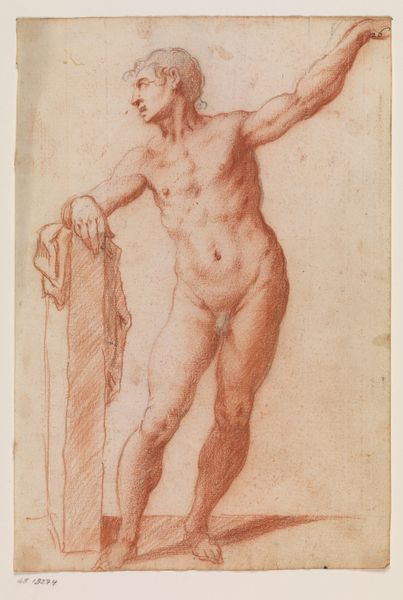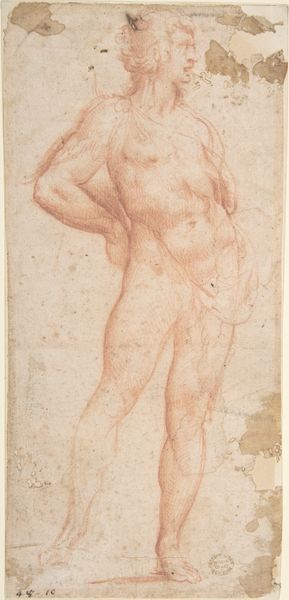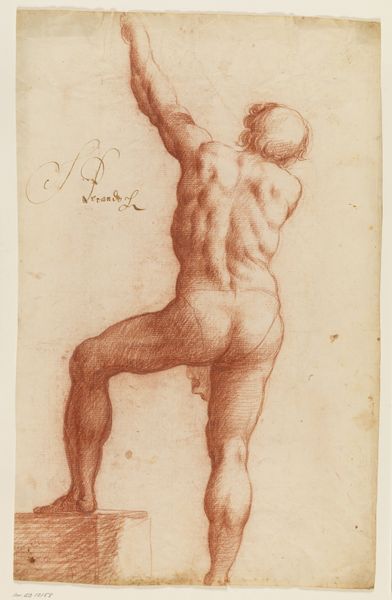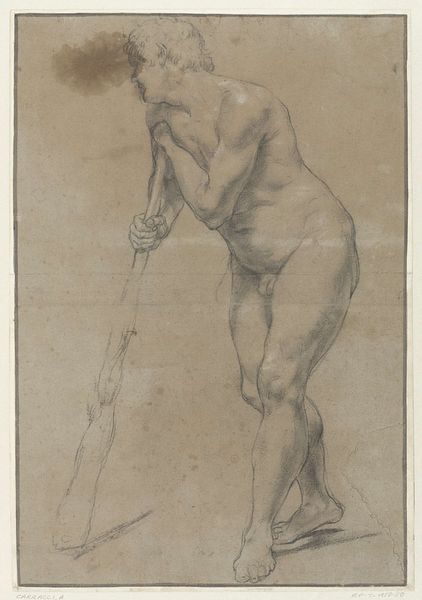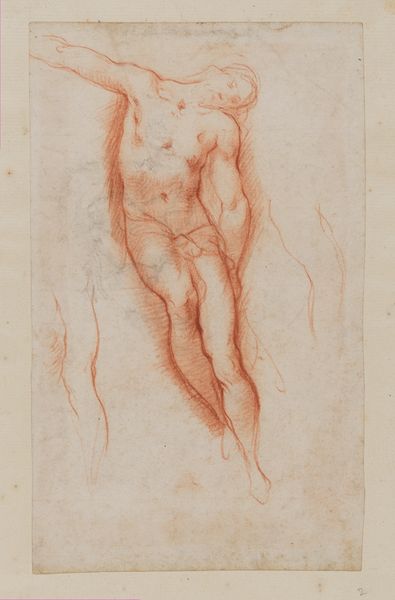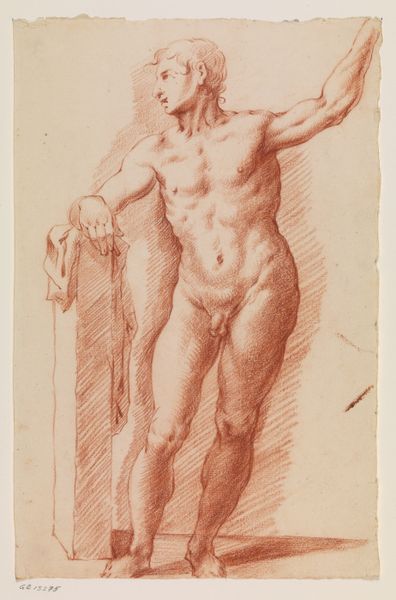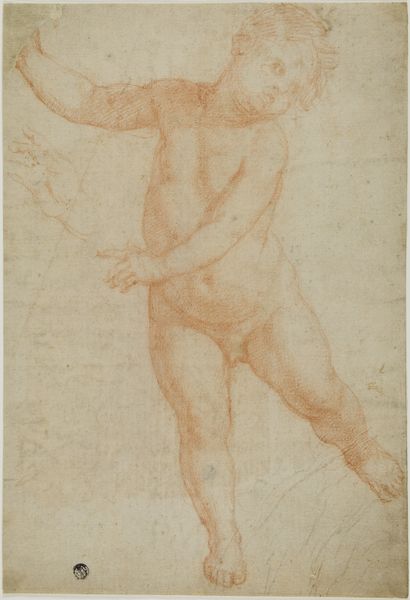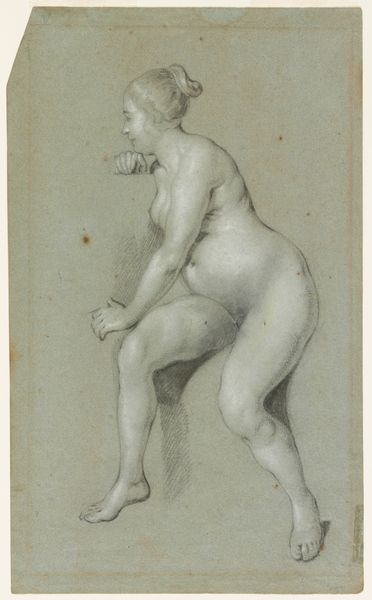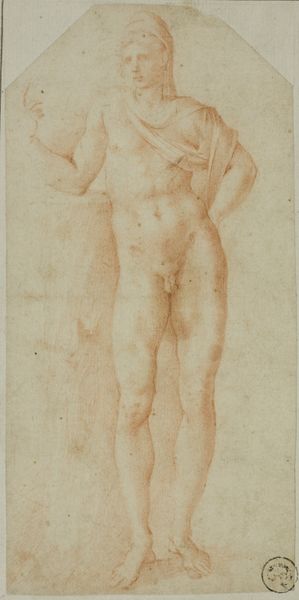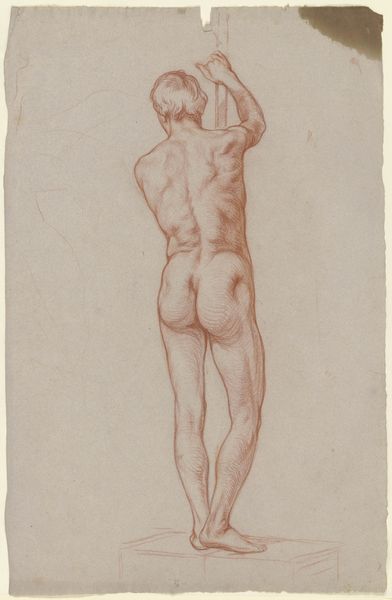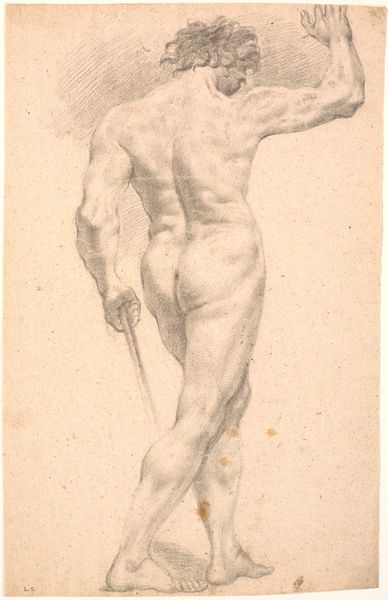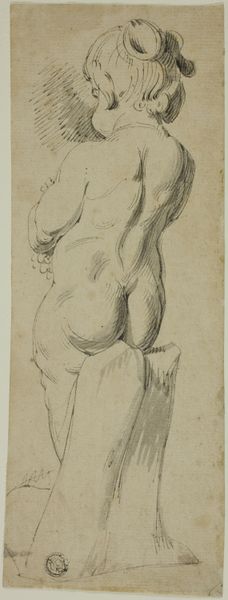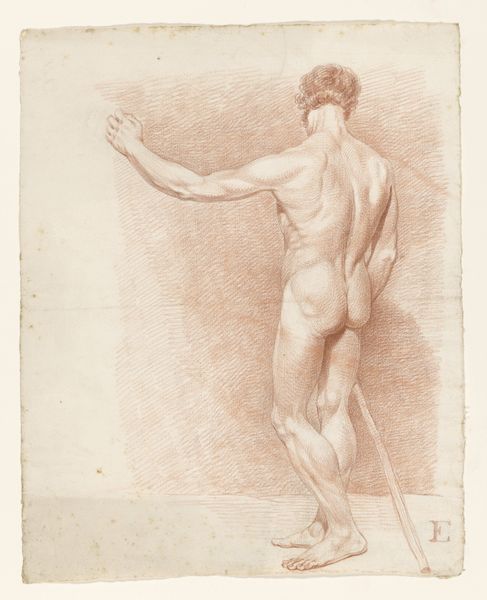
Standing male figure turned to the left and leaning on a tree trunk 1600 - 1624
0:00
0:00
drawing, charcoal
#
portrait
#
drawing
#
charcoal drawing
#
mannerism
#
charcoal
#
nude
Dimensions: 314 mm (height) x 214 mm (width) (bladmaal)
Editor: Here we have “Standing male figure turned to the left and leaning on a tree trunk,” a charcoal drawing likely from the early 17th century, currently held at the Statens Museum for Kunst. What strikes me is the subject's... deliberate pose, and the tension implied between his almost relaxed posture and evident muscularity. How do you read into this particular drawing? Curator: It's an excellent observation. These kinds of figure studies served a vital purpose in the academies of the period. They were exercises in understanding and representing the idealized human form, crucial training for history painters who needed to populate grand canvases with convincing, powerful bodies. Notice, however, that the ideal is quite particular here: Mannerist conventions favoured elongated forms and affected poses, prioritizing elegance over strict naturalism. Do you see how this impacts your perception? Editor: I see what you mean! I guess that answers my unspoken question: who poses like that? It definitely lends the figure a sort of theatricality, but does it carry other implications in this social context? Curator: Indeed. This theatricality serves a social function. Mannerism was favored by aristocratic circles. In some ways, it projects power, sophistication, and control – essential qualities for elites consolidating their power through patronage of the arts. This study suggests an emphasis on social posturing and the importance of bodily presentation within a hierarchical social order. Editor: It's fascinating how what I perceived as mere style actually carries a whole cultural weight. It goes to show the power relations in every form and stroke on the page. Thank you for expanding my view! Curator: It works the other way as well. Engaging with pieces like this forces us to confront the past’s perception of ideal humanity and to understand whose stories were prioritized, so thank you for pointing out what you saw so well in the image!
Comments
No comments
Be the first to comment and join the conversation on the ultimate creative platform.
